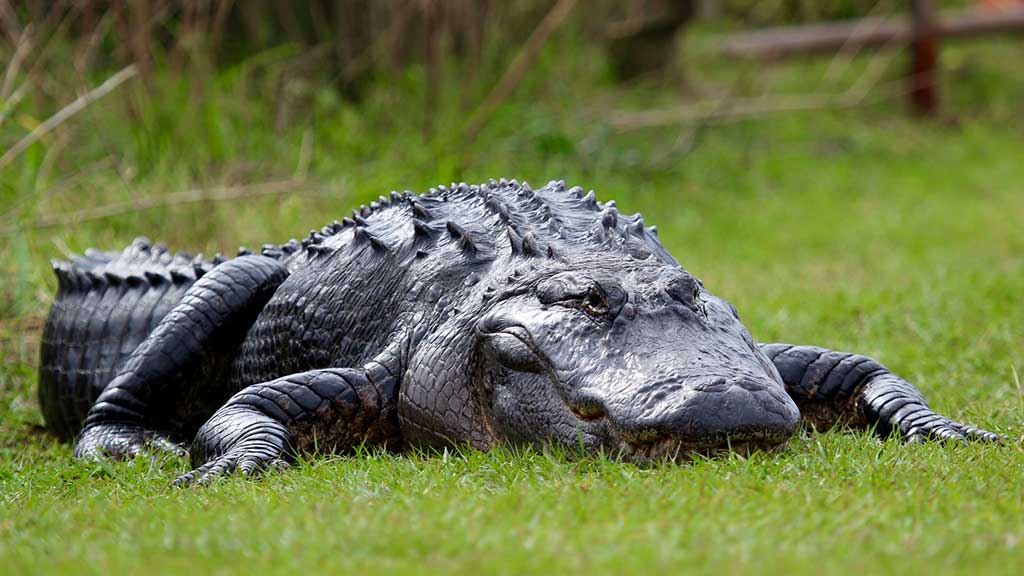Alligators, like many other reptiles, don’t have sex chromosomes.

As a result, alligator gender isn’t determined by the interaction of the parents’ genes. Instead, it is completely decided by temperature.
When it’s egg-laying time, the female finds a nice large area on the bank of her swamp and digs a large hole, up to six feet wide. She then deposits up to fifty eggs and covers them with leaf debris and mud.
The soil and composting leaves provide the warmth the eggs need to mature. During the two-month incubation period, the mother guards the nest from the water nearby.
Gender is determined during the second and third week of incubation. If the temperature of the eggs is 86 °F or below, the alligators inside will all become females. If the temperature is 93 °F or above, the offspring will all be male.
If the eggs simmer at a more moderate 88 °F, as most nests do, the babies will be both male and female. At the end of incubation, the first mature babies begin to make a barking noise from inside their shells.
Barking alligators can be heard up to fifteen yards away, and this signals to Mom that it’s hatching time. The mother’s presence is crucial, as she uncovers the eggs from their buried home. If the mother isn’t available or fails to hear the barking, the offspring can’t hatch.
No matter what gender emerges, mother alligators continue to be very protective.
For the first two years of life, babies travel with Mom, sometimes on her back or in her mouth, and she aggressively guards them from predators like otters, turtles, skunks, raccoons, and other alligators.
